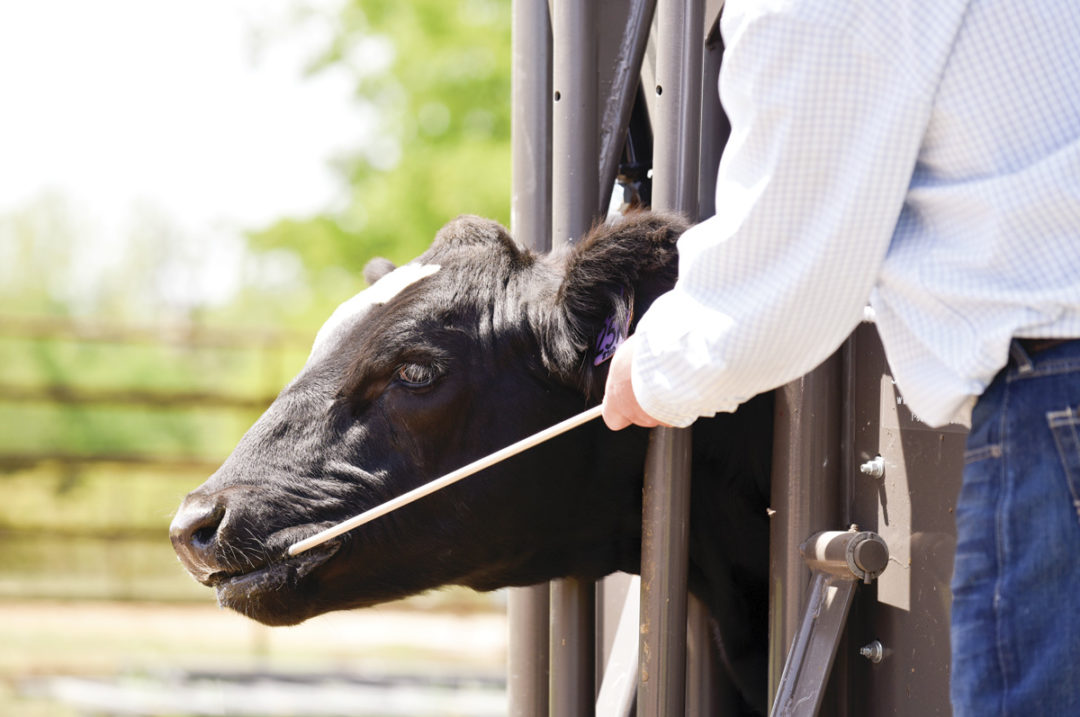And just like that, it’s time for fall processing. Let’s look closely at what we’ll need to give our weaning-aged calves a leg up on their next stage of life.
Vaccinations
For our weaning-aged calves, fall processing is a valuable time to vaccinate them to help build up their immunity. They're at risk for respiratory disease and also some clostridial diseases. So we really need to protect their immune system and offer as much support as we can.
The best time to vaccinate these cattle is actually about three to four weeks prior to weaning, if at all possible. That way, those vaccines kick in, and we have immunity already built up during the stressful time of weaning. During weaning, stress can add up from calves experiencing new surroundings, such as unfamiliar feed, new water sources and commingling with different cattle, which increases exposure to harmful disease pathogens. Stress can compromise immune systems, making vaccinations all the more important.
For weaning-aged calves, you’ll want to vaccinate using:
- A modified-live 5-way vaccine, which will cover bovine viral diarrhea (BVD) types I and II, infectious bovine rhinotracheitis (IBR), bovine respiratory syncytial virus (BRSV) and parainfluenza3 virus (PI3): These are all critical viruses that create respiratory disease in calves. I prefer an injectable during this time frame. The reason is that intranasal vaccines do not include BVD protection, which is an important virus we need to protect our calves against.
- A pasteurella vaccine, which protects against Mannheimia haemolytica and Pasteurella multocida: These are very common bacteria that can invade the lungs and cause severe pneumonia and respiratory disease. You can get these vaccines separately from your modified-live injectables, or you can find a modified-live injectable that has pasteurella protection included. Many people prefer the convenience of having one shot to cover both.
- A 7- or 8-way blackleg vaccine, depending on the part of the country you live in. Your veterinarian would be able to provide some information on which product would be better for your location to best protect calves from these clostridial diseases.
Those are the three big vaccines that every operation can benefit from administering around weaning time. If you're banding bulls at this time, you do need to give a tetanus toxoid as well. Ideally, you’ll give two rounds with the second round being at the time of banding. Practically, for most operations, that's not possible. Many only give one tetanus at the time of banding, and they tend to get along OK, but there is still some risk there.
Implanting
An implant would be important for this group of calves. Implants improve efficiency and profitability – increasing the animals’ growth by up to 20% and improving feed efficiency by up to 10%. The return on investment can be upward of 10-to-1, so for every dollar you spend on an implant, you can get $10 back.
Here are a few tips when implanting:
- Ensure proper positioning. Implant the backside of the ear, in the middle third. You can find diagrams online to help illustrate proper positioning.
- Implement low-stress cattle handling, which will reduce overcrowding and excess manure contamination of the head and ears.
- Prioritize sanitation and cleanliness to help minimize the risk of infection and ear abscesses, which can prevent the implant from working.
- Place a bucket nearby with disinfectant and a stiff brush so you can gently clean the ear using disinfectant. Replace the solution after it becomes dirty.
- In addition to cleaning any soiled ears, disinfect all sides of the needle using a sponge soaked in a disinfectant. I recommend using chlorhexidine.
Deworming
For this age group, in the fall, I prefer an oral drench dewormer because it better controls parasites for this group based on some recent studies. Next spring, I’d recommend a pour-on or an injectable because it gets those ectoparasites as well. Now, the newest thing for deworming cattle is to use combination deworming methods, where you give two different classes of dewormers at the same time, such as you might give both a pour-on and an oral drench. That’s also a very effective combination to control parasites, lice and flies.
We can use fecal samples to monitor for parasite load and measure how effective our deworming program is. It's been shown that it's actually much more accurate to monitor fecals in calves instead of cows because it shows a more accurate representation of the parasite load in your pasture area. A fecal egg count reduction test (FECRT) would tell how effective your dewormers are. Steps for an FECRT include:
- Retrieve a sample from a calf.
- Deworm the calf.
- Two weeks later, retrieve a sample from the same calf.
- Confirm results with your veterinarian – an effective deworming should show a 95% reduction in those egg counts.
With this information, along with insight from your veterinarian, I hope you feel well-prepared for fall processing.










